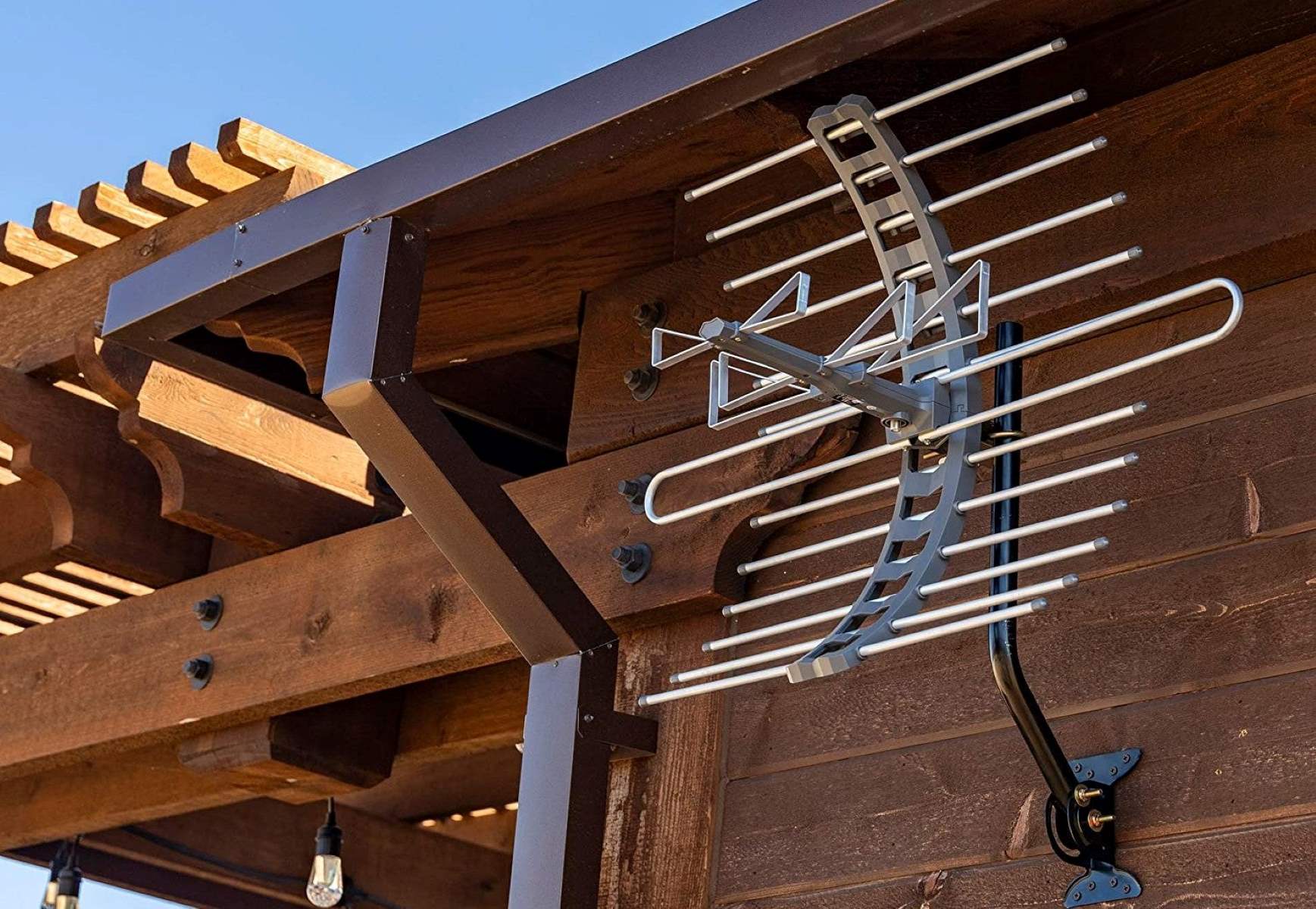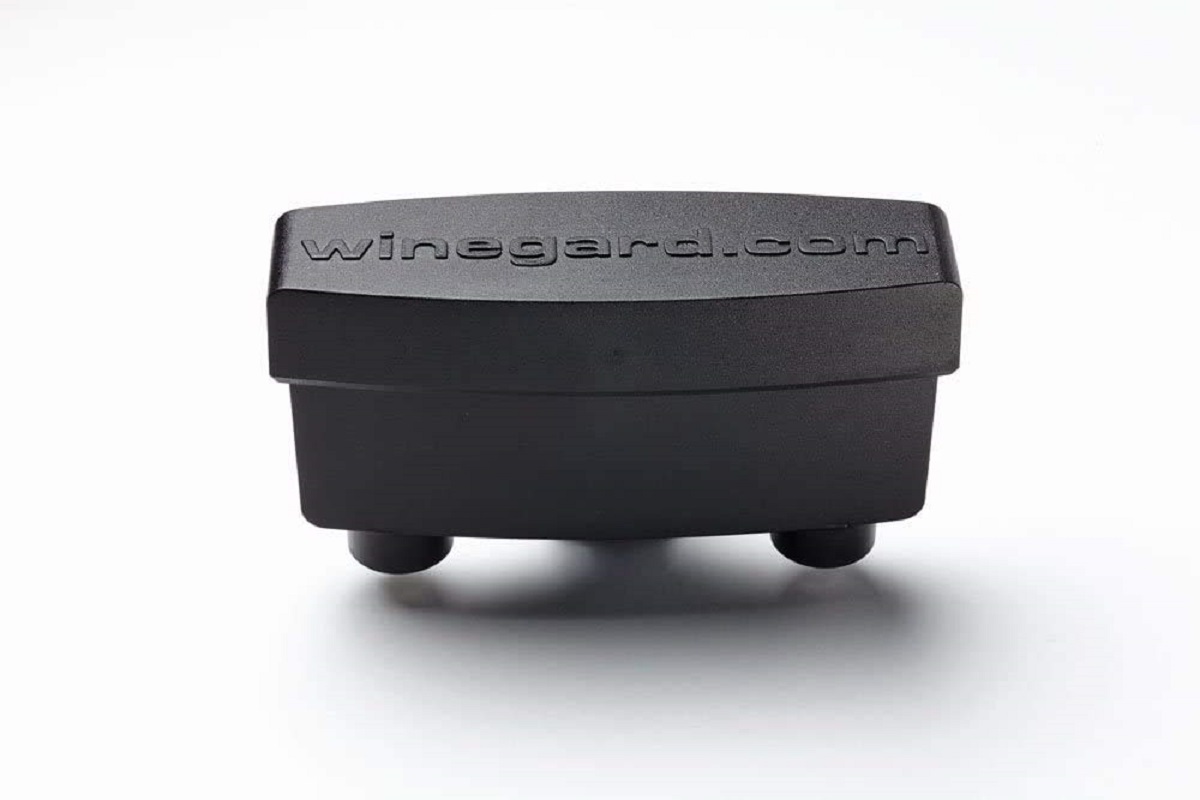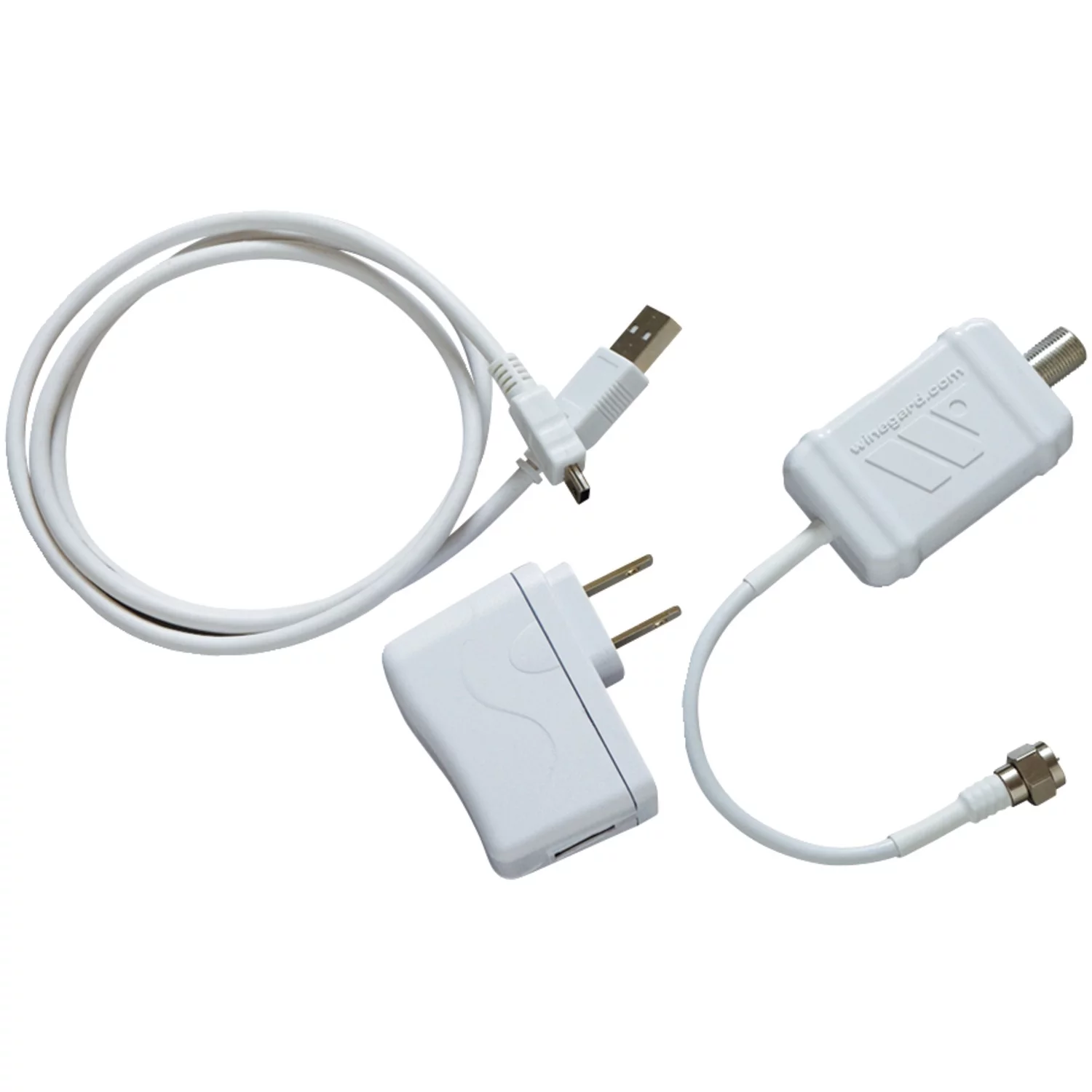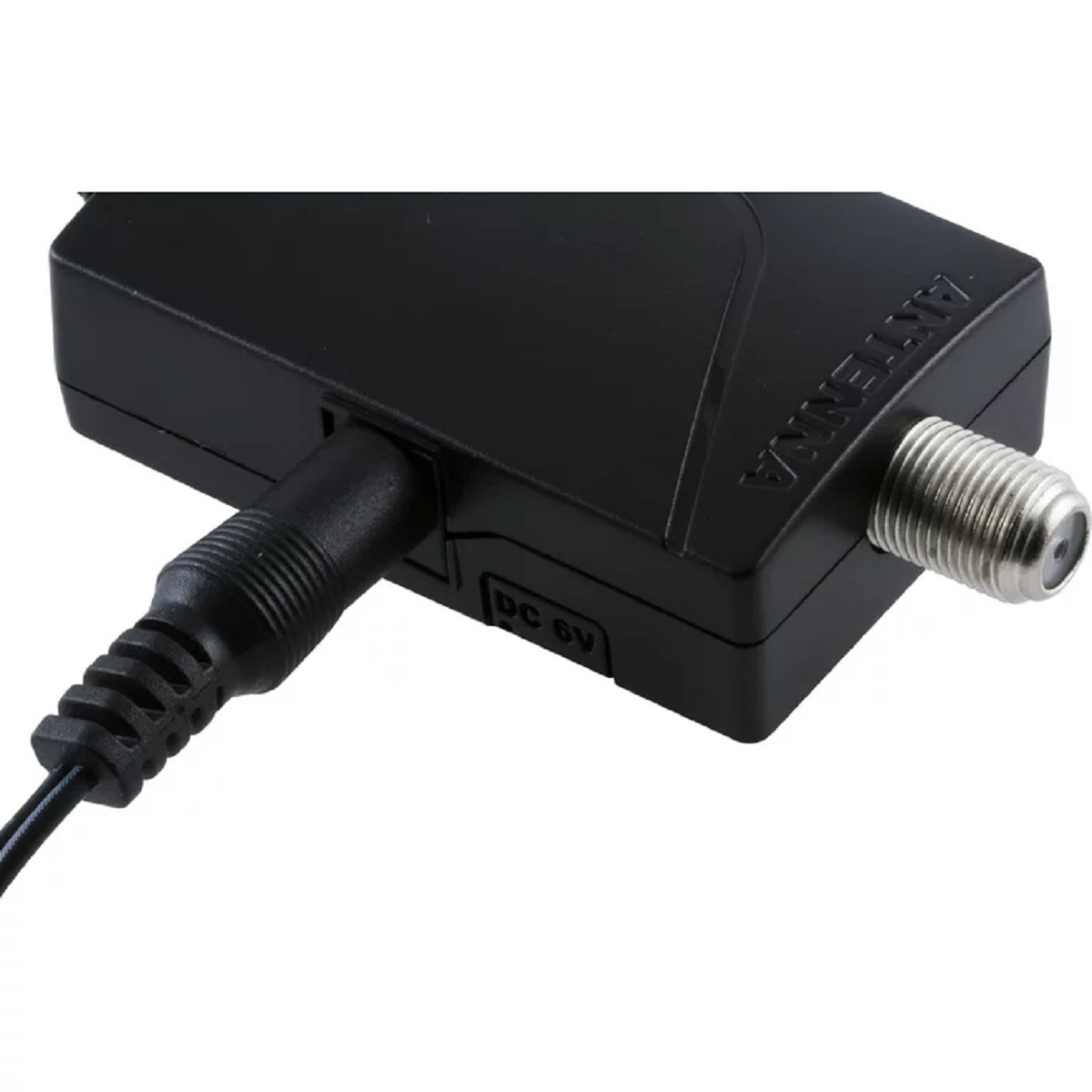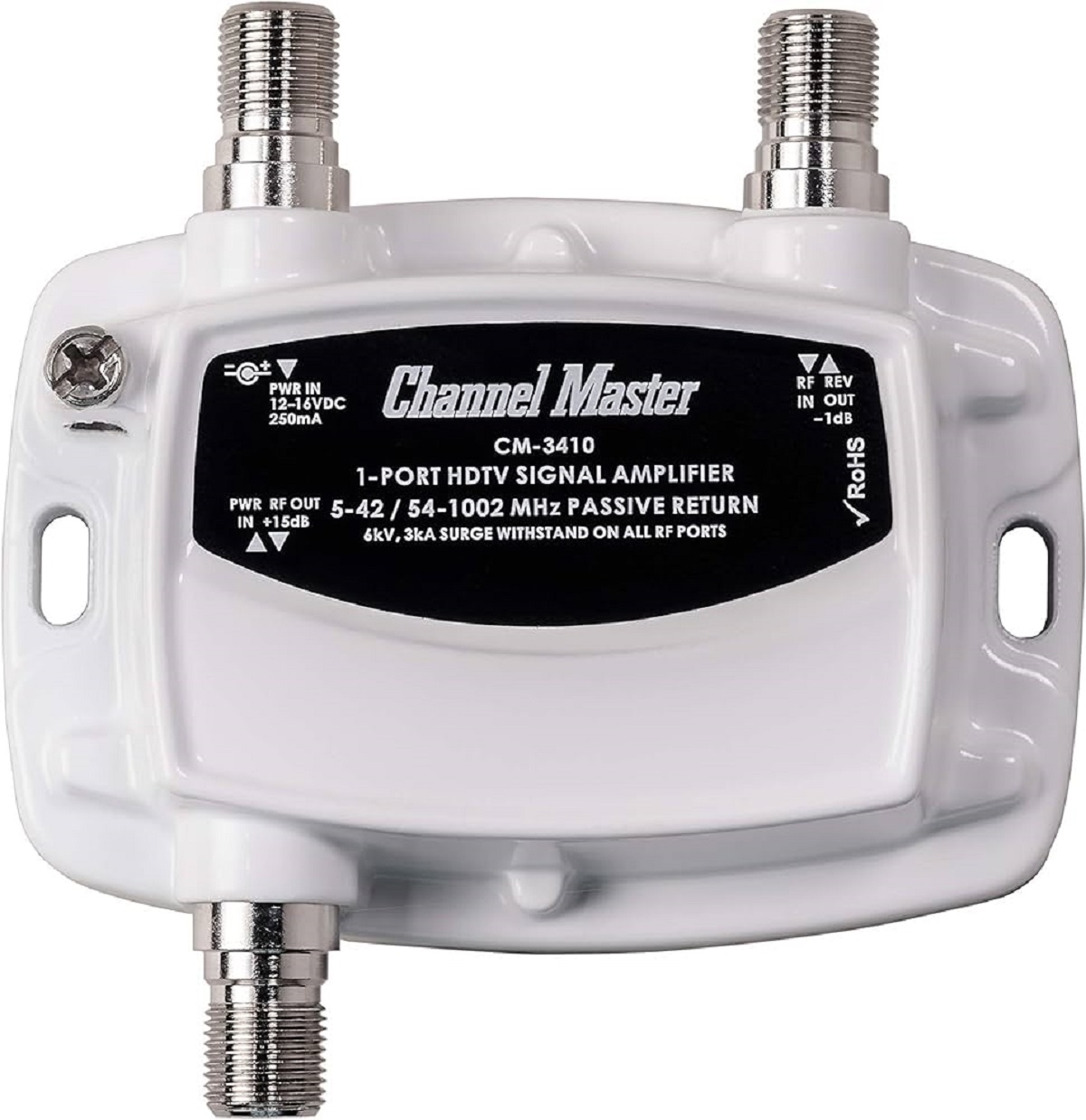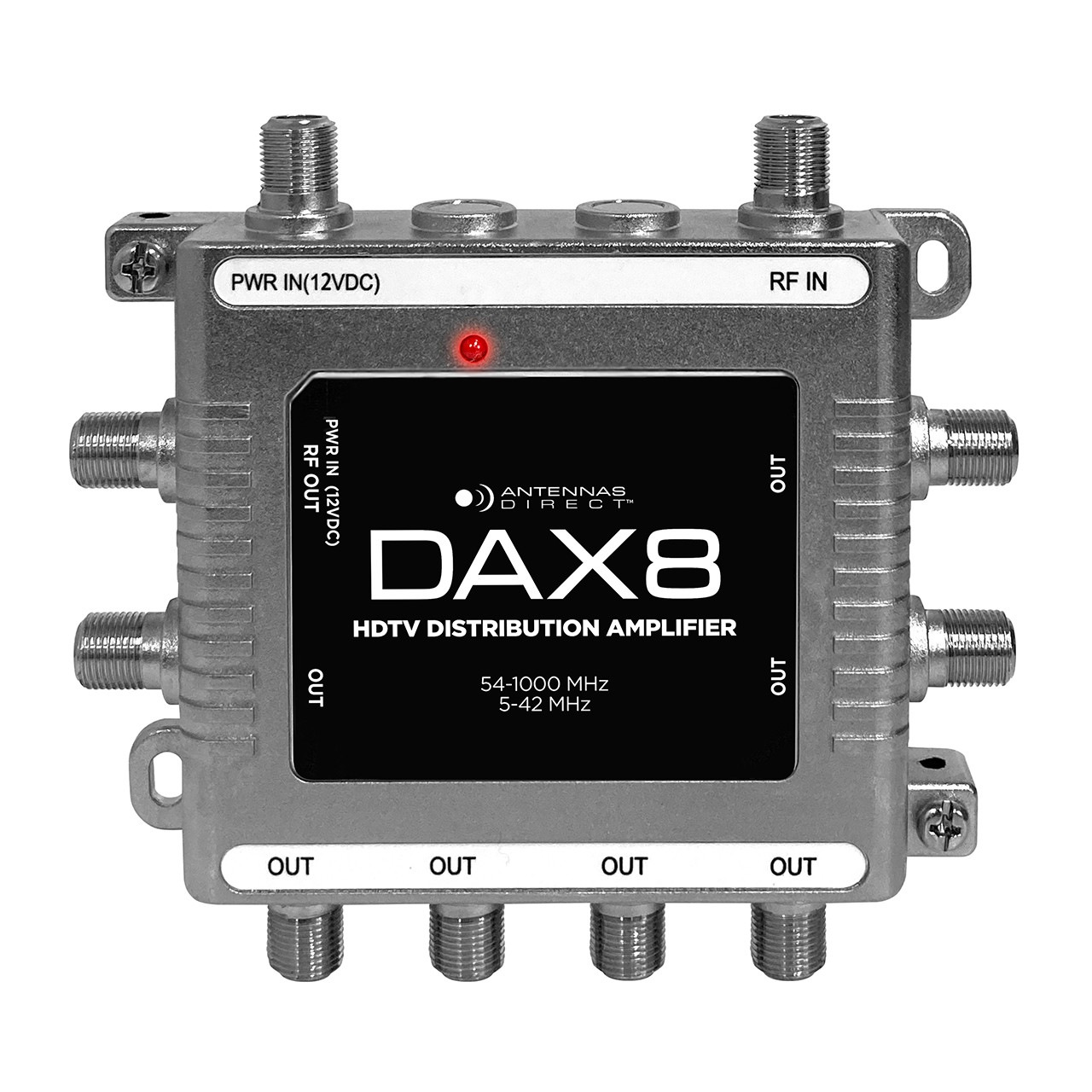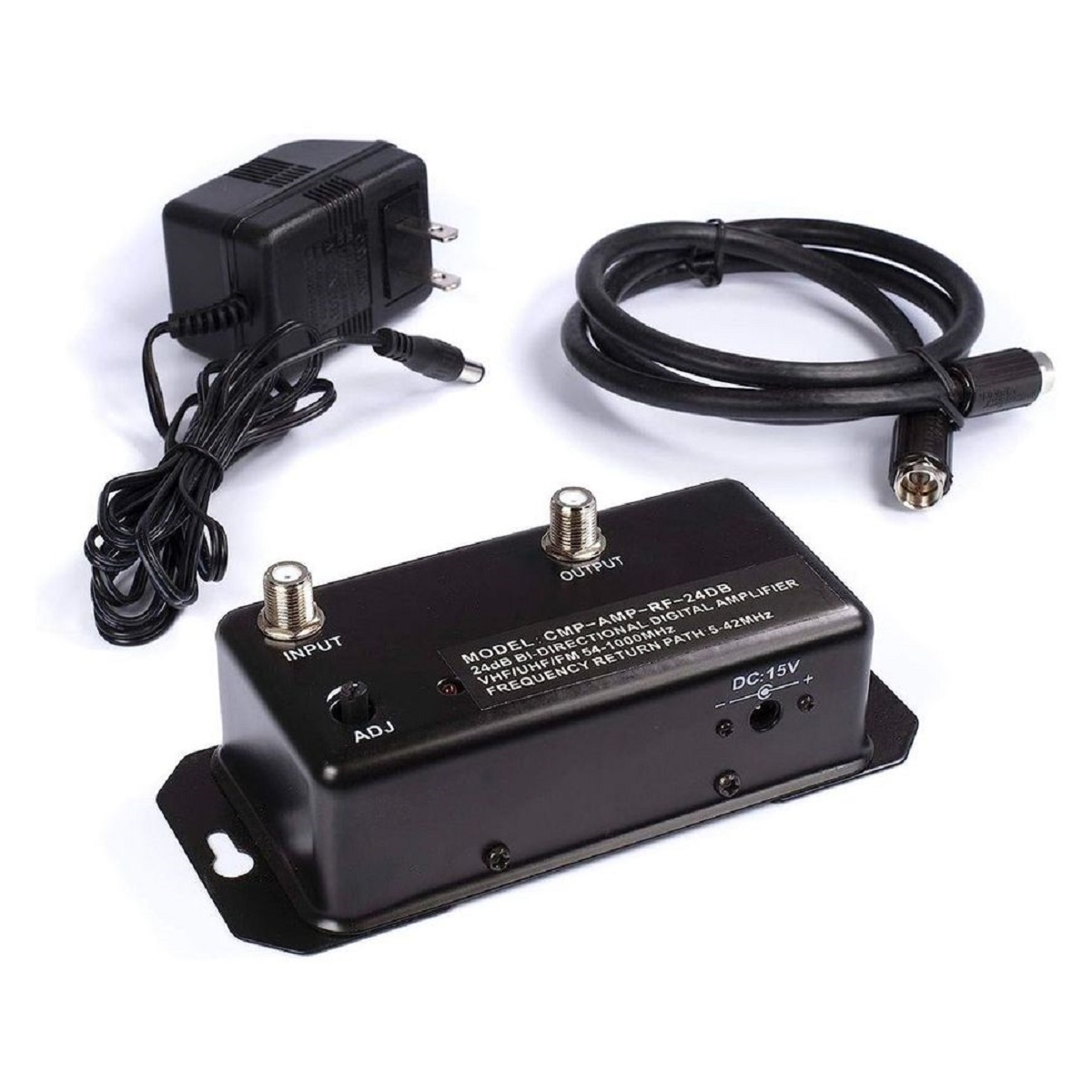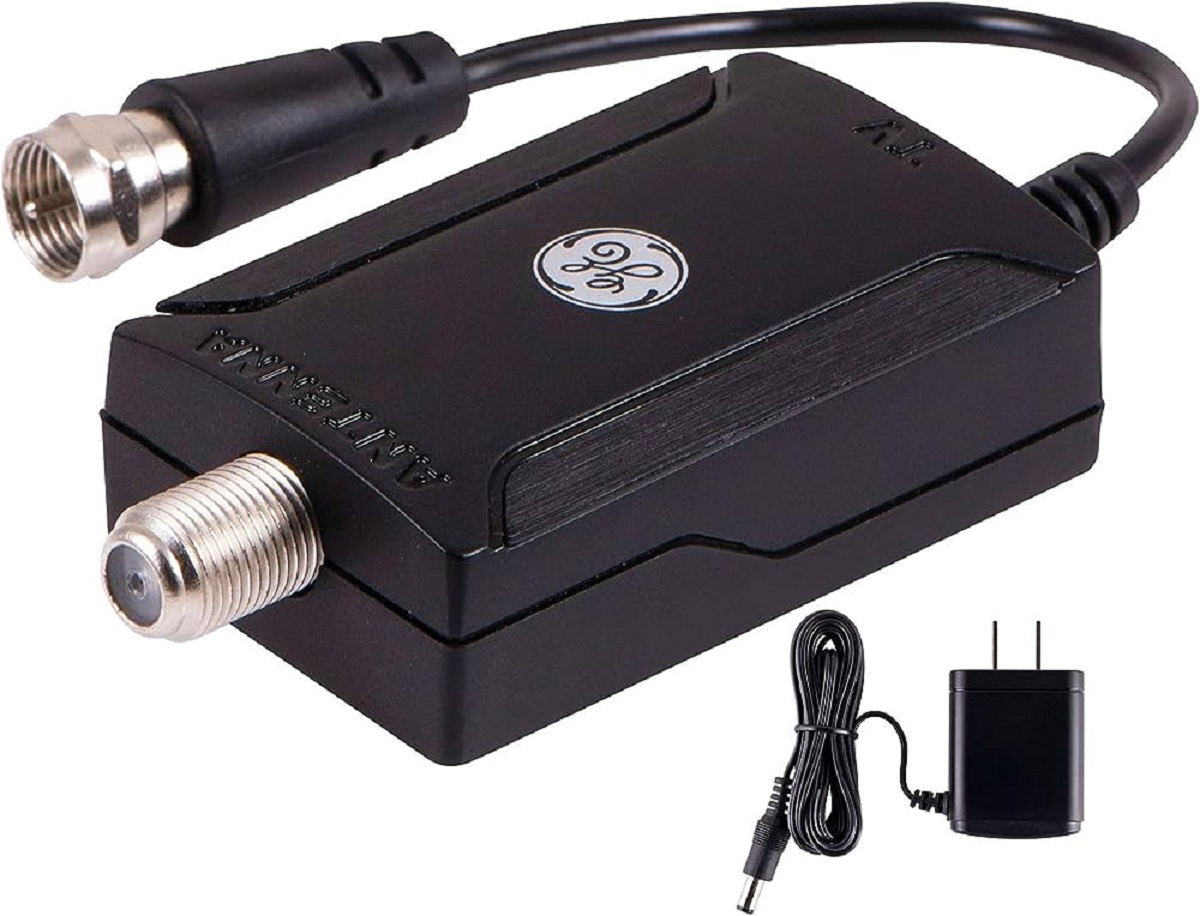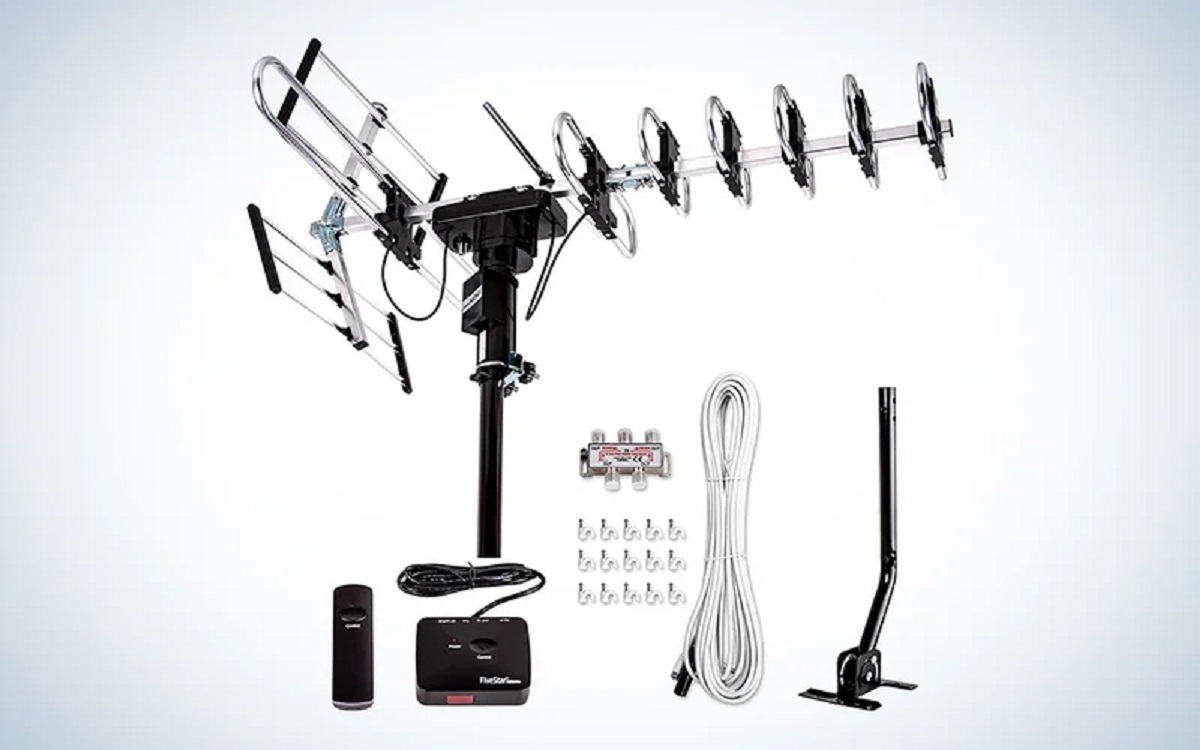Introduction
Welcome to the world of television antenna signals! While streaming services and cable TV have gained popularity, many households still rely on traditional over-the-air television broadcasts to enjoy their favorite shows and movies. However, there can be instances where the TV antenna signal may not be as strong as desired, resulting in poor reception and frustrating viewing experiences.
In this guide, we will delve into the intricacies of TV antennas and explore various methods to boost your TV antenna signal. Whether you’re struggling with pixelated images, fuzzy reception, or channels that simply refuse to tune in, we’ve got you covered. By understanding the factors influencing signal strength and implementing effective techniques, you’ll be able to enhance your TV antenna’s performance and enjoy crystal-clear, uninterrupted viewing in no time.
We’ll walk you through essential maintenance tasks, such as inspecting and maintaining your TV antenna, as well as positioning and orienting it for optimal reception. We’ll even delve into advanced strategies such as using amplifiers, signal boosters, and antenna rotators to maximize your signal strength. Additionally, we’ll explore ways to remove interference and obstacles that can hinder your TV antenna’s performance, as well as discuss the potential benefits of upgrading your antenna.
So, whether you’re a cord cutter looking to rely exclusively on over-the-air broadcasting, or simply want to enhance the signal strength on your TV for better performance, this guide is here to help. Let’s dive in and discover the secrets to boosting your TV antenna signal.
Understanding TV Antennas and Signal Strength
Before we dive into the various methods of boosting your TV antenna signal, it’s important to have a basic understanding of how TV antennas work and the factors that affect signal strength.
TV antennas are designed to receive over-the-air television signals, which are broadcasted from local TV stations in your area. These signals consist of electromagnetic waves with specific frequencies that carry audio and video information. The antenna, typically mounted on a rooftop or positioned indoors, captures these signals and sends them to your television, where they are decoded and displayed onscreen.
The signal strength of your TV antenna refers to the amount of power or amplitude of the received signal. It is measured in dBm (decibel milliwatts) or dBµV (decibel microvolts). The stronger the signal, the better the reception quality, resulting in clearer images and sound.
Several factors can affect the signal strength of your TV antenna:
- Distance from the broadcast tower: The farther you are from the broadcast tower, the weaker the signal will be. This can occur in rural or suburban areas where the towers may be located far away.
- Obstacles and interference: Buildings, trees, mountains, and other physical structures can block or weaken the incoming signal. Additionally, electromagnetic interference from other electrical devices can cause signal degradation.
- Weather conditions: Extreme weather conditions like heavy rain, snow, or lightning can affect signal reception temporarily.
Understanding these factors can help you assess the potential challenges you may face in boosting your TV antenna signal. By identifying the specific issues affecting signal strength, you can implement appropriate strategies to overcome them and improve your overall viewing experience.
Factors Affecting TV Antenna Signal Strength
When it comes to TV antenna signal strength, several factors come into play. By understanding these factors, you can better assess the challenges you may face and implement the right solutions to boost your signal. Let’s take a closer look at some of the key factors affecting TV antenna signal strength:
Distance from Broadcast Tower
The distance between your location and the broadcast tower plays a significant role in signal strength. The farther you are from the tower, the weaker the signal will be. In rural or suburban areas, where the broadcast towers are often located at a distance, it can be a challenge to receive a strong signal. In such cases, using a high-gain antenna or installing a signal amplifier may be necessary to enhance the reception.
Obstacles and Interference
Physical obstructions between your TV antenna and the broadcast tower can significantly impact signal strength. Buildings, trees, mountains, and other structures can block or weaken the incoming signal. It’s important to position your antenna in a location that has a clear line of sight to the tower. Avoid placing the antenna near large obstacles that can obstruct the signal path. Additionally, electromagnetic interference from other electrical devices, such as Wi-Fi routers, baby monitors, or microwave ovens, can cause signal degradation. Keeping your antenna away from these sources of interference can help improve signal reception.
Weather Conditions
Extreme weather conditions can temporarily affect TV antenna signal strength. Heavy rain, snow, or lightning can cause signal distortion or loss. While it’s difficult to mitigate the impact of severe weather, ensuring your antenna is properly installed and maintained can help minimize any adverse effects.
Antenna Quality and Placement
The quality and placement of your TV antenna play a crucial role in signal strength. Investing in a high-quality antenna with a higher gain can help enhance reception. Additionally, positioning your antenna at the optimal height and angle can make a significant difference. It’s recommended to mount the antenna as high as possible and orient it towards the broadcast tower for the best results.
By considering these factors and implementing appropriate solutions, you can improve your TV antenna signal strength and enjoy a better viewing experience. In the next sections, we’ll discuss various methods to inspect, maintain, and optimize your antenna to maximize signal reception.
Inspecting and Maintaining Your TV Antenna
To get the best performance out of your TV antenna, regular inspection and maintenance are essential. Over time, antennas can become damaged or accumulate debris, which can negatively impact signal reception. Here are some steps you can take to inspect and maintain your TV antenna:
Visual Inspection
Start by visually inspecting your antenna to check for any obvious signs of damage. Look for loose or corroded connections, bent elements, or rusted mounting hardware. If you notice any issues, repair or replace the damaged parts as necessary. Additionally, check the coaxial cable for any cuts or frayed ends and ensure it is securely connected to the antenna and your TV.
Clean the Antenna
Over time, dirt, dust, and debris can accumulate on your antenna, affecting signal reception. Gently clean the antenna using a soft cloth or brush to remove any buildup. Avoid using harsh chemicals or abrasive materials, as they can damage the antenna surface. If the dirt is stubborn, you can use a mild detergent mixed with water to clean it. Rinse thoroughly and allow the antenna to dry completely before reconnecting it.
Check for Corrosion
Corrosion on the antenna elements or connectors can weaken the signal. Inspect the antenna for any signs of corrosion and remove it using a solution of vinegar and water. Dip a soft cloth in the solution and gently clean the affected areas. Once clean, rinse with water and allow it to dry thoroughly.
Secure Mounting Hardware
Ensure that the mounting hardware for your antenna is securely tightened to prevent any movement or misalignment. Tighten any loose bolts, screws, or clamps and ensure the antenna is firmly attached to its mounting bracket or mast. This will help maintain the antenna’s optimal position, ensuring the best signal reception.
Consider an Antenna Mast or Rotor
If you live in an area with multiple TV transmission towers in different directions, consider installing an antenna mast or rotor. These devices allow you to easily rotate the antenna to face the desired tower, maximizing signal strength. This is especially helpful in areas where the towers are located in different directions or if you frequently switch between different broadcast stations.
By regularly inspecting and maintaining your TV antenna, you can ensure optimal performance and a strong signal reception. In the next section, we’ll discuss the importance of positioning and orienting your TV antenna for optimal signal reception.
Positioning and Orienting Your TV Antenna
The positioning and orientation of your TV antenna are crucial factors in optimizing signal reception. By taking the following steps, you can ensure that your antenna is set up in the best possible way to receive strong, clear signals:
Find the Broadcast Towers
Identifying the location of the broadcast towers in your area is the first step towards positioning your TV antenna. You can use online tools or mobile apps specifically designed to help you determine the exact direction and distance of the towers from your location. Knowing the exact direction will enable you to aim your antenna accurately.
Opt for a High Point
For optimal signal reception, position your TV antenna at the highest point possible. This helps eliminate obstructions such as buildings or trees that may hinder the signal. Mount your antenna on your roof, in an attic, or on a tall mast to increase its height and improve its line-of-sight to the towers.
Orient the Antenna Correctly
Once you have identified the direction of the broadcast towers, aim your antenna towards them. Most antennas have a built-in rotator or marker indicating the direction. Orient the antenna to face the towers directly for the best signal reception. To fine-tune the direction, you may need to make slight adjustments while monitoring the signal strength on your TV.
Consider Signal Reflection
In some cases, signal reflections can help improve reception. If you’re experiencing weak signals, try orienting your antenna towards structures like tall buildings or mountains. These structures can reflect the signals, increasing the overall strength. Experimenting with different orientations can help you find the optimal position for your antenna.
Account for Distant Broadcast Towers
If the broadcast towers in your area are located at a significant distance, you may need to use a long-range antenna or consider installing a signal amplifier. These devices can help boost the signal strength, allowing you to capture signals from faraway towers effectively.
By positioning and orienting your TV antenna correctly, you can maximize signal reception and enjoy clearer, high-quality television. In the next section, we’ll explore the use of amplifiers and signal boosters to enhance your TV antenna signal.
Using Amplifiers and Signal Boosters
If you’re struggling with weak TV antenna signals, amplifiers and signal boosters can be valuable tools to improve signal strength and reception quality. These devices work by amplifying the weak signals captured by the antenna, allowing for improved signal transmission to your television. Here’s how you can effectively use amplifiers and signal boosters:
Assess Your Signal Strength
Before considering an amplifier or booster, it’s important to assess your current signal strength. Some TV models have built-in signal strength meters in their settings or menus. Alternatively, you can use a dedicated signal strength meter or a smartphone app specifically designed for signal detection. This will help you determine if an amplifier or booster is necessary.
Choose the Right Amplifier or Booster
There are various types of amplifiers and signal boosters available in the market, so it’s essential to choose the right one for your specific needs. Consider factors such as the distance to the broadcast towers, the number of televisions connecting to the antenna, and the available power source. Select an amplifier or booster that is compatible with your antenna and meets your signal enhancement requirements.
Proper Installation
Follow the manufacturer’s instructions to install the amplifier or booster correctly. Most devices are designed to be connected between the antenna and the television. Ensure that the cables are securely connected, and the power supply, if required, is properly connected and functioning. Improper installation can lead to signal degradation or cause interference, so it’s crucial to pay attention to the installation process.
Consider Distribution Amplifiers
If you have multiple televisions in your home connected to a single TV antenna, consider using a distribution amplifier. These amplifiers split the signal from the antenna into multiple outputs, allowing each television to receive a strong and clear signal simultaneously. This eliminates the need for separate amplifiers for each TV, simplifying the setup and ensuring consistent signal quality.
Monitor Signal Quality
After installing the amplifier or booster, regularly monitor the signal quality on your TV to ensure optimal performance. Some amplifiers have integrated signal strength indicators or LED lights to help you gauge the signal strength. Use these indicators to determine if any adjustments are needed to maximize reception quality.
By utilizing amplifiers and signal boosters effectively, you can overcome weak signals and enjoy improved TV antenna reception. In the next section, we’ll explore the use of antenna rotators to optimize signal reception.
Using Antenna Rotators for Optimal Signal Reception
If you live in an area with broadcast towers located in different directions, or if you frequently switch between different channels, using an antenna rotator can help you achieve optimal signal reception. Antenna rotators allow you to adjust the direction of your TV antenna easily, ensuring that it is pointed towards the desired tower. Here’s how you can effectively use antenna rotators:
Choose the Right Antenna Rotator
When selecting an antenna rotator, consider factors such as the weight and size of your TV antenna, the degree of rotation required, and the control mechanism. Choose a rotator that is compatible with your antenna and can handle the specific requirements of your setup. It’s important to ensure that the rotator can handle the weight and size of your antenna without causing strain or instability.
Mount the Rotator and Antenna
Follow the manufacturer’s instructions to correctly mount the rotator and antenna. Generally, the rotator is mounted on a sturdy surface, such as a rooftop or a mast. Ensure that the antenna is securely attached to the rotator, allowing for free rotation. It’s crucial to use the appropriate mounting hardware to ensure stability and prevent damage or accidents.
Calibrate the Rotator
Before using the rotator, it’s important to calibrate it properly. This involves programming the rotator to accurately track the azimuth (horizontal) direction of the broadcast towers. Consult the rotator’s manual for specific calibration instructions. Calibration ensures that the rotator rotates the antenna accurately, leading to optimal signal reception.
Control the Antenna Rotation
Antenna rotators typically come with a control mechanism, usually a remote control or a control box. Use the control mechanism to rotate the antenna to the desired direction. While doing so, monitor the signal strength on your TV to determine the optimal rotation for each channel. You may need to experiment and make adjustments to find the best orientation for each tower or channel. Take note that rotating the antenna can affect the signal strength, so ensure that the adjustments result in improved reception.
Consider Pre-Programmed Positions
Some antenna rotators offer pre-programmed positions for popular broadcast towers in your area. These positions allow for easier and quicker adjustments to specific towers without the need for manual rotation. If available, take advantage of these pre-set positions to simplify the antenna orientation process.
By using an antenna rotator effectively, you can easily optimize signal reception and ensure that your TV antenna is pointed towards the desired broadcast tower. In the next section, we’ll discuss ways to remove interference and obstacles that can hinder your TV antenna’s performance.
Removing Interference and Obstacles
Interference and obstacles can significantly affect the performance of your TV antenna and weaken the signal. Identifying and removing these interference sources and obstacles is crucial for optimal signal reception. Here are some steps you can take to minimize interference and remove obstacles:
Identify Interference Sources
Electromagnetic interference from other devices can disrupt the TV antenna signal. Identify potential sources of interference in your vicinity, such as Wi-Fi routers, cordless phones, baby monitors, or microwave ovens. Additionally, power lines and electrical devices with strong electromagnetic fields can also cause interference. By locating these sources, you can take appropriate measures to reduce their impact on your TV antenna signal.
Adjust or Reposition Interference Sources
In some cases, it may be possible to adjust or reposition the interference sources to minimize their impact. For example, if your Wi-Fi router is causing interference, try changing its position or adjusting its channel settings to reduce the interference. Similarly, relocating other electrical devices away from the antenna or using shielded cables can help reduce the interference and improve signal reception.
Install Filters
In situations where interference cannot be completely eliminated, you can consider using filters to block the specific frequencies that are causing the interference. These filters, also known as notch filters or FM traps, can be installed between the antenna and the TV. They help block unwanted signals from specific frequencies, ensuring cleaner signal transmission to your television.
Clear Line of Sight
Obstacles such as buildings, trees, or other structures can obstruct the TV antenna’s line of sight to the broadcast towers, leading to degraded reception. Trim or remove any overhanging branches or vegetation that may be blocking the signal path. Additionally, consider relocating the antenna or raising its height, if feasible, to achieve a clearer line of sight to the towers.
Adjust Antenna Placement
Experiment with different antenna placements to minimize the impact of obstacles. Sometimes, even small adjustments in the antenna’s position can improve signal reception. Try rotating or tilting the antenna slightly to find the sweet spot with the least obstruction and highest signal strength. Monitoring the signal strength on your TV during these adjustments will help you determine the optimal antenna placement.
By identifying and removing interference sources and obstacles, you can optimize the performance of your TV antenna and enjoy improved signal reception. In the next section, we’ll explore the option of upgrading your TV antenna to further enhance signal strength and quality.
Upgrading Your TV Antenna
If you’ve tried various methods to boost your TV antenna signal but still aren’t getting satisfactory results, it may be time to consider upgrading your antenna. Upgrading to a more advanced antenna can offer improved signal reception and better overall performance. Here are some points to consider when upgrading your TV antenna:
Choose the Right Antenna Type
There are different types of TV antennas available, each designed for specific reception scenarios. Research the different types, such as indoor antennas, outdoor antennas, or attic-mounted antennas, to determine which one suits your needs best. Consider factors such as your location, distance from broadcast towers, and potential obstructions when selecting an antenna type.
Consider the Antenna Range
The range of the antenna is an important factor to consider. If you live in an area with close proximity to broadcast towers, a short-range antenna may suffice. However, if you’re located far away or in a rural area, a long-range antenna with a higher gain may be necessary to capture weaker signals. Assess the signal strength in your area and choose an antenna with an appropriate range.
High-Gain Antenna
A high-gain antenna is designed to capture weaker signals and amplify them to enhance reception. This type of antenna is ideal for areas with low signal strength or when dealing with obstacles that obstruct the signal path. Consider investing in a high-gain antenna to improve signal reception and overall performance.
Multi-Directional vs. Directional Antennas
Multi-directional antennas are designed to capture signals from multiple directions, whereas directional antennas are more focused and capture signals from a specific direction. Assess your location and the direction of the broadcast towers to determine whether a multi-directional or directional antenna would be more suitable.
Professional Installation
If you’re uncertain about the installation process or find it challenging to mount and position the antenna correctly, consider hiring a professional installer. A professional can ensure that the antenna is installed properly, optimizing its performance and maximizing signal reception. They can also offer advice on the best antenna type and location based on your specific requirements.
Upgrading your TV antenna can greatly improve your signal reception, providing clearer images and better sound quality. Research the available options, consider your specific needs, and consult with professionals if needed. By investing in a quality antenna, you can experience enhanced performance for your TV viewing pleasure.
Conclusion
Boosting your TV antenna signal is essential for enjoying high-quality, uninterrupted television viewing. By understanding the factors that affect signal strength and implementing effective strategies, you can overcome common signal issues and enhance your overall experience.
We discussed various methods to boost your TV antenna signal, starting with inspecting and maintaining your antenna. Regular inspection and cleaning ensure optimal performance by removing any obstructions or debris. Positioning and orienting your antenna towards the broadcast towers are crucial for maximizing signal reception, and using amplifiers, signal boosters, and antenna rotators further enhance signal strength and overall performance.
Additionally, we explored removing interference sources and obstacles that can hinder signal reception. By identifying and addressing these issues, you can minimize signal degradation and improve picture and sound quality. Finally, we discussed the option of upgrading your TV antenna, considering factors such as antenna type, range, and gain to further enhance signal reception.
Remember, each situation is unique, and the effectiveness of these strategies may vary based on your location and specific circumstances. It’s important to assess your signal strength, experiment with different techniques, and adapt them to suit your needs.
By implementing the methods outlined in this guide, you can significantly boost your TV antenna signal and enjoy clearer images, better sound quality, and a more satisfying TV viewing experience. So, whether you’re a cord-cutter, someone looking to improve over-the-air broadcasting, or simply seeking better TV reception, follow these strategies to maximize the potential of your TV antenna.







